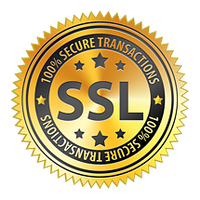Snowboard Responsibility Code #6 Obey All Signs
This online snowboard lesson will go over the Snowboarder Responsibility Code #6 Obey All Signs. I know that some of the rules of the mountain are pretty obvious but people do stupid stuff. If there are ropes and signs saying something is closed there’s a reason. Sometimes you dropping a rope puts others lives in danger causing an avalanche to trigger and come inbounds. In some resorts they won’t come rescue you if you go in out of bounds areas. That’s something to keep in mind if you decide not to follow the rules. You’ll have access to all our snowboard tutorials when you signup that cover every step and feedback from your coach. We also have some free snowboard videos to prepare for Beginner Snowboard Skills & Drills on our YouTube Page. I recommend watching these snowboard videos; Snowboard Responsibility Code #1, Snowboard Responsibility Code #2, Snowboard Responsibility Code #3, Snowboard Responsibility Code #4, Snowboard Responsibility Code # 5, Snowboard Responsibility Code #7, Beginner Snowboard Lesson on Steering, Toeside Heelside Stance, Learn How To Ride The Lifts Safely, How to Snowboard: Balance Twist & Beginner Snowboard Stance. Learn to snowboard online with flowingfreeride.com, Take Placement Quiz, take a look at Our Blog for more free content, and learn to snowboard right!
I know it’s tempting to jump a rope when you see a perfect powder field on the other side. Those ropes are there to keep everyone safe. Use the gates to enter the backcountry or side country. Ski Patrol has gone through and made sure conditions are safe. It might look great on top but underneath there’s rock and other obstacles. There might be machines on the trail or wildlife. I like to hike and rip powder but I want to return home safe and able to snowboard another day. The big thing to signs is staying out of closed areas. You might duck a rope and land on another trail or end up at the bottom of a huge kicker in the park. It’s not smart and it’s not safe to jump over ropes or duck under them to go into closed areas.
The other signs out here on the mountain are for safety. Look up the trail when you see trail merging signs and really be careful in the slow areas. There’s a joke amongst us snowboarders that we say if snowboarding was invented first all the slow signs would say speed up. Slow signs are at the bottom or in flatter areas and ironically we need to keep our speed to get through the flats. I like to take trails that avoid these areas if possible or ones with the least amount of traffic. Let’s face it we need our speed. When we see these signs try to take paths that are safe and to stay in control at a safe speed. I always look at my terrain and pick a line where I’m higher up on the mountain. You need to have some basic skills on how to survey the terrain to pick the best line that avoids the flats.
If you’re a beginner try to avoid crowded slow areas and know bamboo rope fences are closed areas. Bouncing and jumping on the lift can damage it and endanger other passengers. Other signs exist and depending where you are in the world you’ll want to have some understanding of their language and what warning signs are. In Europe Blue trails are equivalent to Green trails or easy in America, Red equals Blue or Intermediate and Black Trails are still Difficult. There were other things that differed from the US but I researched and talked to locals about safety signs and topics to think safety first. You can practice efficiently with Snowboardclass/FlowingFreeride’s techniques so go back to earlier snowboard videos that teach you about kids and beginner movements. You can signup to get access to all of our snowboard lessons, study guides, textbooks, glossary, tests and direct feedback from your coach. Learn to snowboard online with flowingfreeride.com and take a look at our YouTube Page for more free content and learn to snowboard right! My name is Blake Tholen Clark contact me if you want to book a lesson or have any questions about Snowboarding.


